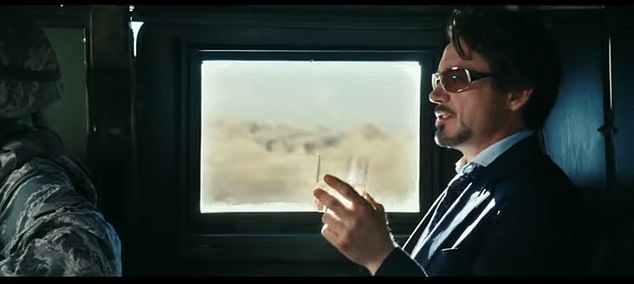Remember the gory torture scene in Reservoir Dogs? Expert reveals how filmmakers use music to manipulate our memories so we recall certain parts of movies
>
- The study shows how filmmakers use music to help viewers remember scenes
- Their tunes are usually unmatched, and they use upbeat songs during violent events
- Experts also found that the trailers will include sing-along songs so that people will remember the films
- Read more: Three primal fears that horror films use to elicit emotional responses
Filmmakers have a secret weapon to manipulate our memories and emotions when watching their films.
Researchers have found that melodies are strategically placed throughout movies to help viewers remember a scene’s events, characters, and eventual outcome.
Torture of a police officer in Reservoir Dogs is accompanied by the upbeat song “Stuck in the Middle with You” by Stealers Wheel, making it unforgettable for moviegoers who can recall the violent scene years later.
Psychology experts have also found that appropriate music is essential for trailers, as filmmakers only have a few minutes to capture the audience’s attention and convince them that their film is worth watching.
The torture of a police officer in Reservoir Dogs is accompanied by the upbeat song “Stuck in the Middle with You” by Stealers Wheel, making it unforgettable for moviegoers who can recall the violent scene years later.
Written by Libby Damjanovic of Lund University Conversation That music is an essential part of films and has become “so ingrained in our cinematic experience that we sometimes end up with a false memory of it.”
Damjanovic and her team conducted an experiment in 2021 on how filmmakers can use music to manipulate memories.
Participants watched a comedy trailer, with one group listening to happy music and another watching the same content with sad music.
The results showed that those who watched the trailer with sad music or incongruent conditions showed a recognition memory advantage on visual tests compared to the other group.
Damjanovic referred to this as mood inconsistency, suggesting that signals encoded with emotionally mismatched stimuli, such as cheerful music combined with images of sad expressions, lead to emotional arousal. More memories from signals encoded with emotionally congruent stimuli, such as live music with images of positive facial expressions.

One of the trailers highlighted by Damjanovic in the report is for the 2008 film “Iron Man,” which captures viewers within seconds of its playback due to Black Sabbath’s “Iron Man.” A lyrical tune is played at the beginning that is easy for viewers to remember
‘These effects appear to be relatively short-lived, and whether they can make any long-term impact beyond the few minutes of a movie trailer or movie scene has yet to be fully determined.
“Eventually, they are informed by our past experiences and stored in our long-term memory, ready and on standby for the next plot twist.”
Other examples of violent scenes with mismatched music are in the 1997 film Face/Off, starring Nicolas Cage and John Travolta.
In a shooting scene, bullets fly, people die, and a young boy listens to Olivia Newton-John’s performance of “Somewhere Over the Rainbow.”
“A hit piece of music often includes earworms — songs that stick in our minds,” Damjanovic said.

Researchers have found that melodies are strategically placed throughout movies to help viewers remember a scene’s events, characters, and eventual outcome
“These tend to be songs that have been big hits and have recently appeared on the music charts.
When paired with movie sequences, new takes on old hits help keep the audience entertained.
Their familiarity with singing and foot-tapping reflects the enormous exposure they have had for decades.
“Therefore, it is easily exploited as an effective marketing tool, especially in movie trailers – where there is little time to make an impact on viewers.”
One of the trailers highlighted by Damjanovic in the report is for the 2008 film “Iron Man,” which captures viewers within seconds of its playback due to Black Sabbath’s “Iron Man.”
In the first seconds of the clip, Tony Stark, played by Robert Downey Jr., is wandering through the desert, which may not sound exciting, but the sound of an electric guitar in the background makes it sound exciting.
(Tags for translation)dailymail
